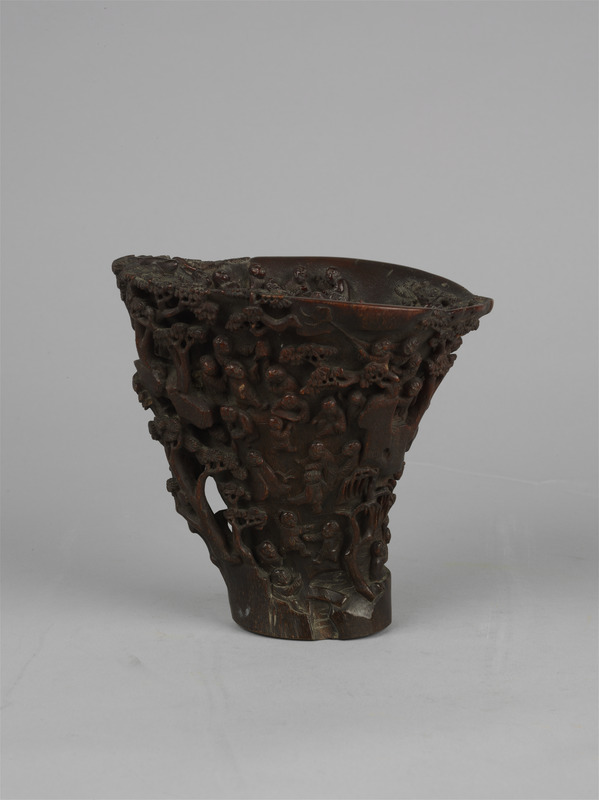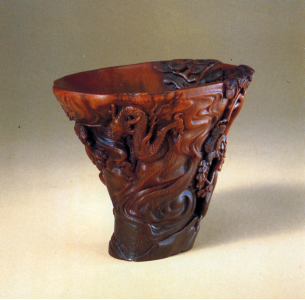Rhinoceros Horn Cup

Qing Dynasty.
Wine vessel.
Height: 16.5 cm; mouth diameter: 16cm; bottom diameter:7cm.
Collected by Hunan Provincial Museum in 1950s.
Rhinoceros horn has the effects of cooling blood, detoxification and relieving convulsion etc, well counterbalancing the hot effect of wine. Therefore, Ancient Chinese people made wine sets out of rhinoceros horn, hoping to eliminate diseases and prolong their lives .
This cup was made in accordance with the shape of the horn. At the rim as well as the body of the cup were vividly carved dozens of children playing in different postures, some elegant pavilions and beautiful landscape scenery, from which the exquisite rhinoceros relief art in Qing Dynasty can be easily seen.
The work above is called the “Painting of 100 Children”, which well expresses a traditional good wish of Chinese people that a family with many descendants is more likely to be prosperous and lasting.
深入探索
Origin of rhinoceros carvings
There were once 5 sets of rhinoceros bones unearthed from Hemudu Site in Zhejiang Province (with a history of 7000 years), which suggests that rhinoceros had ever been living in China since a very early age. Besides, many kinds of rhinoceros ever lived in Xinjiang and the surrounding places of Tibetan Plateau during prehistoric age.
According to several historical documents of Shang Dynasty (1600BC- 1046BC), Warring States and the Western Han Dynasty etc, the rhinoceros horn was rare and precious, often used for presenting tribute and making armor, and it was deeply loved by ancient people.
Today however, due to various human activities and the environment change, the number of rhinoceros in China has gradually decreased, making rhinoceros one of the endangered animals. Nowadays, people can’t use its horn for art purpose anymore, hence the existing rhinoceros horn reliefs (the number is about 5000) are considered as precious art works.

Rhinoceros horn cup carved with cloud and dragon, Ming Dynasty, collected by the Palace Museum.

Rhinoceros horn celestial being boat, Ming Dynasty, collected by Shanghai Museum.



